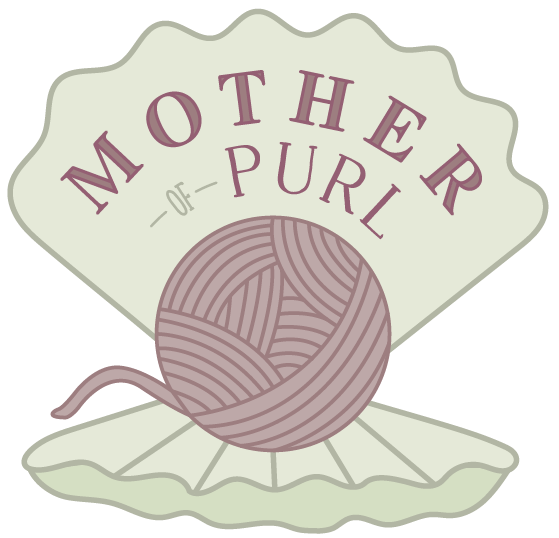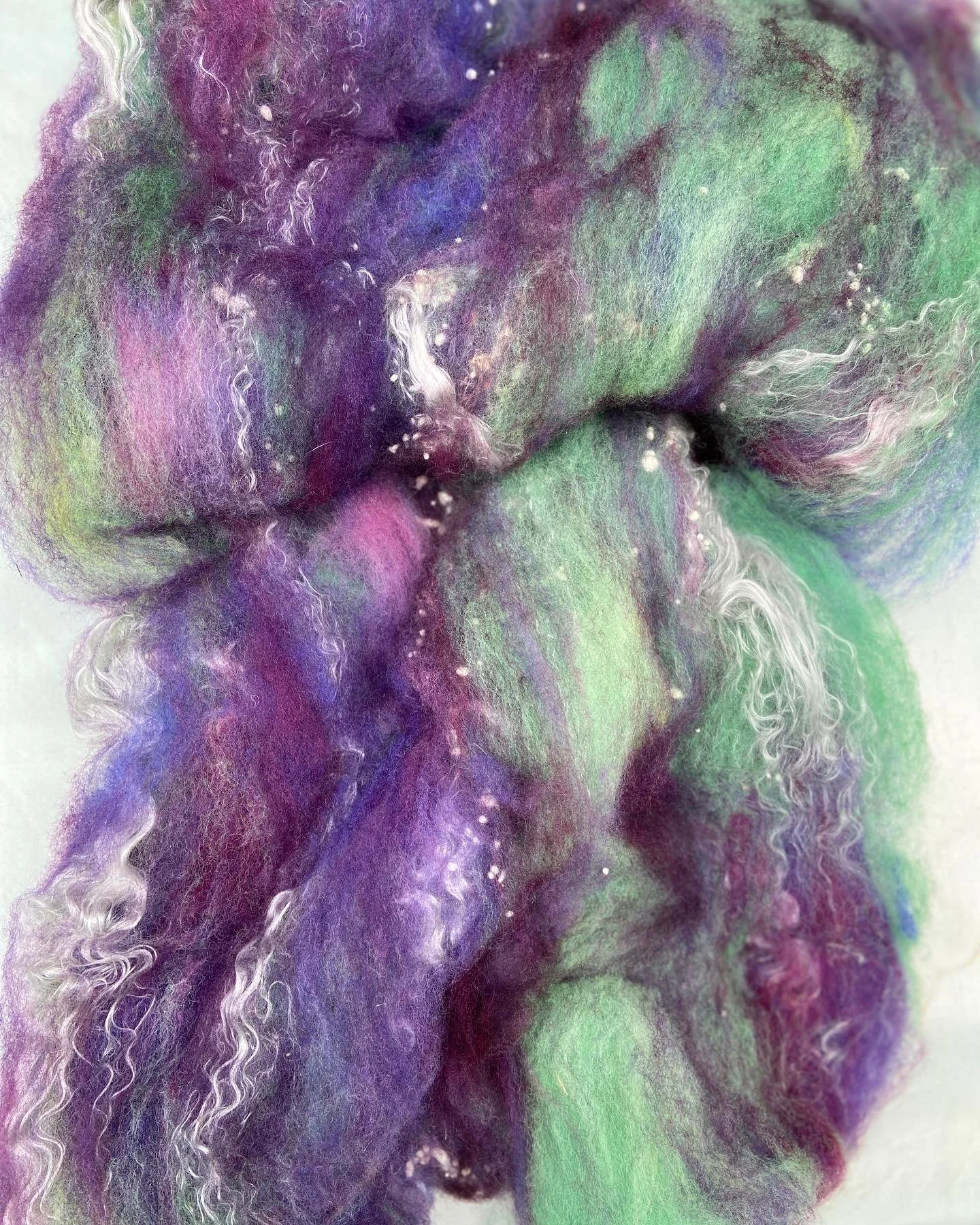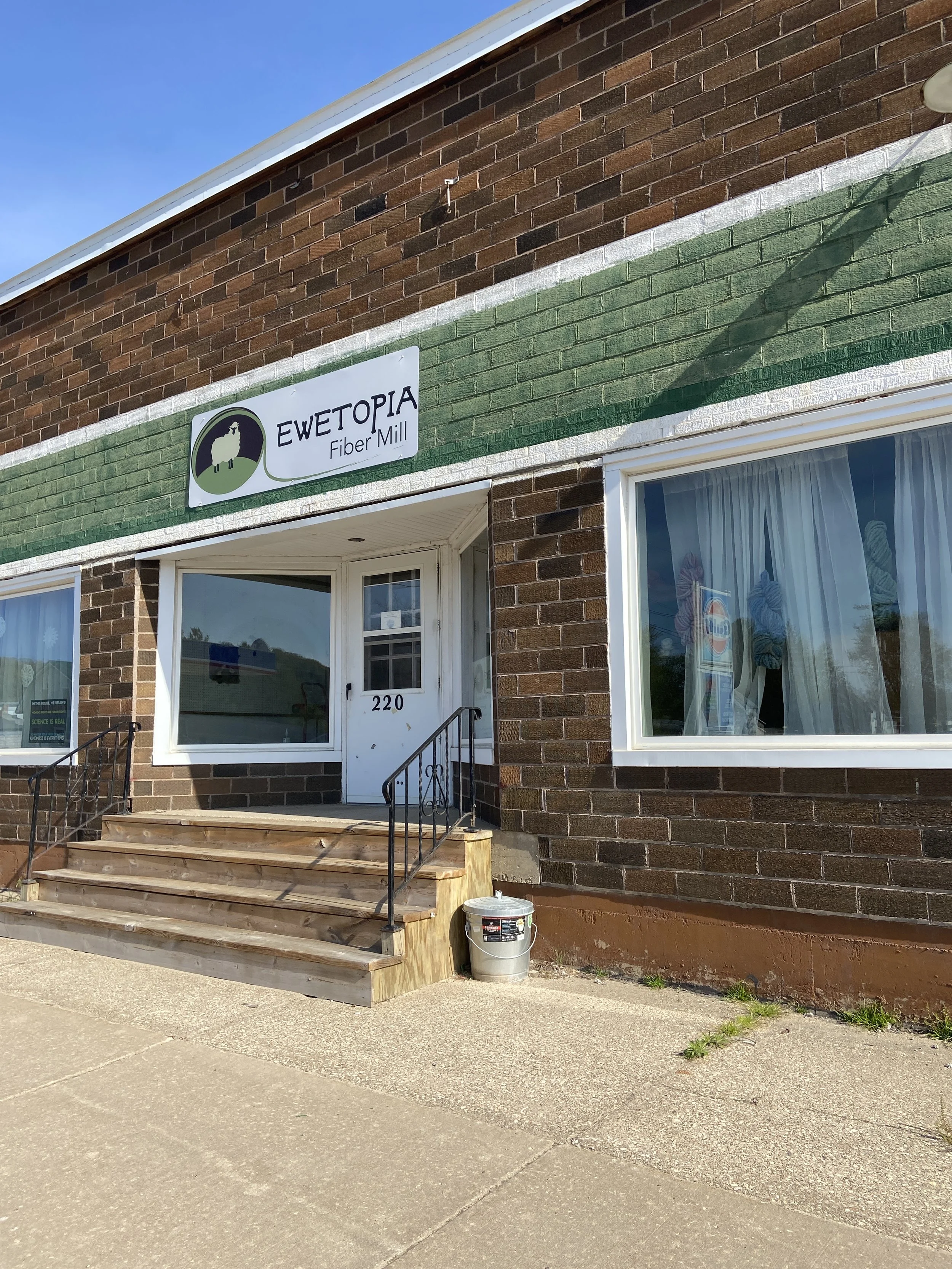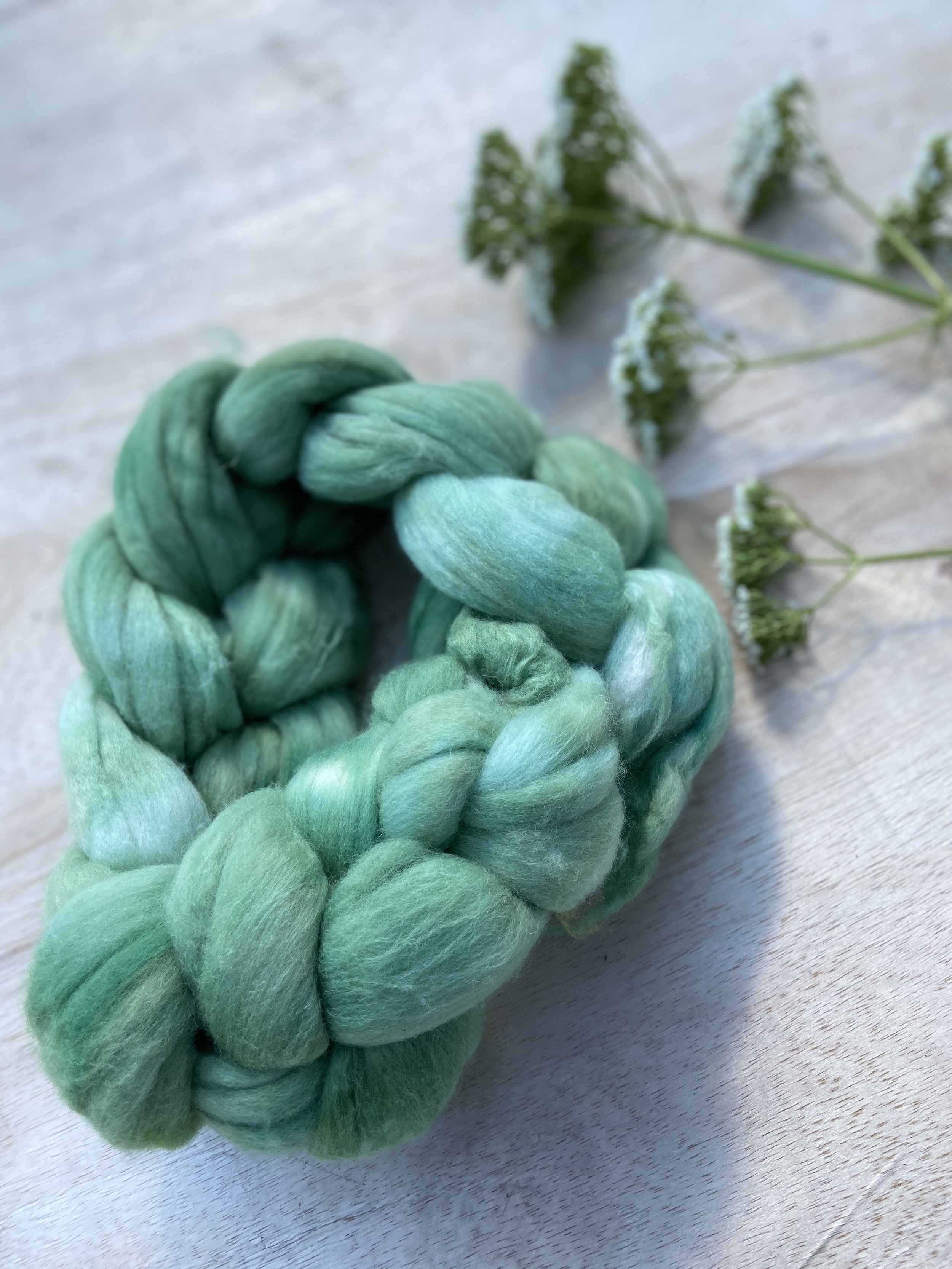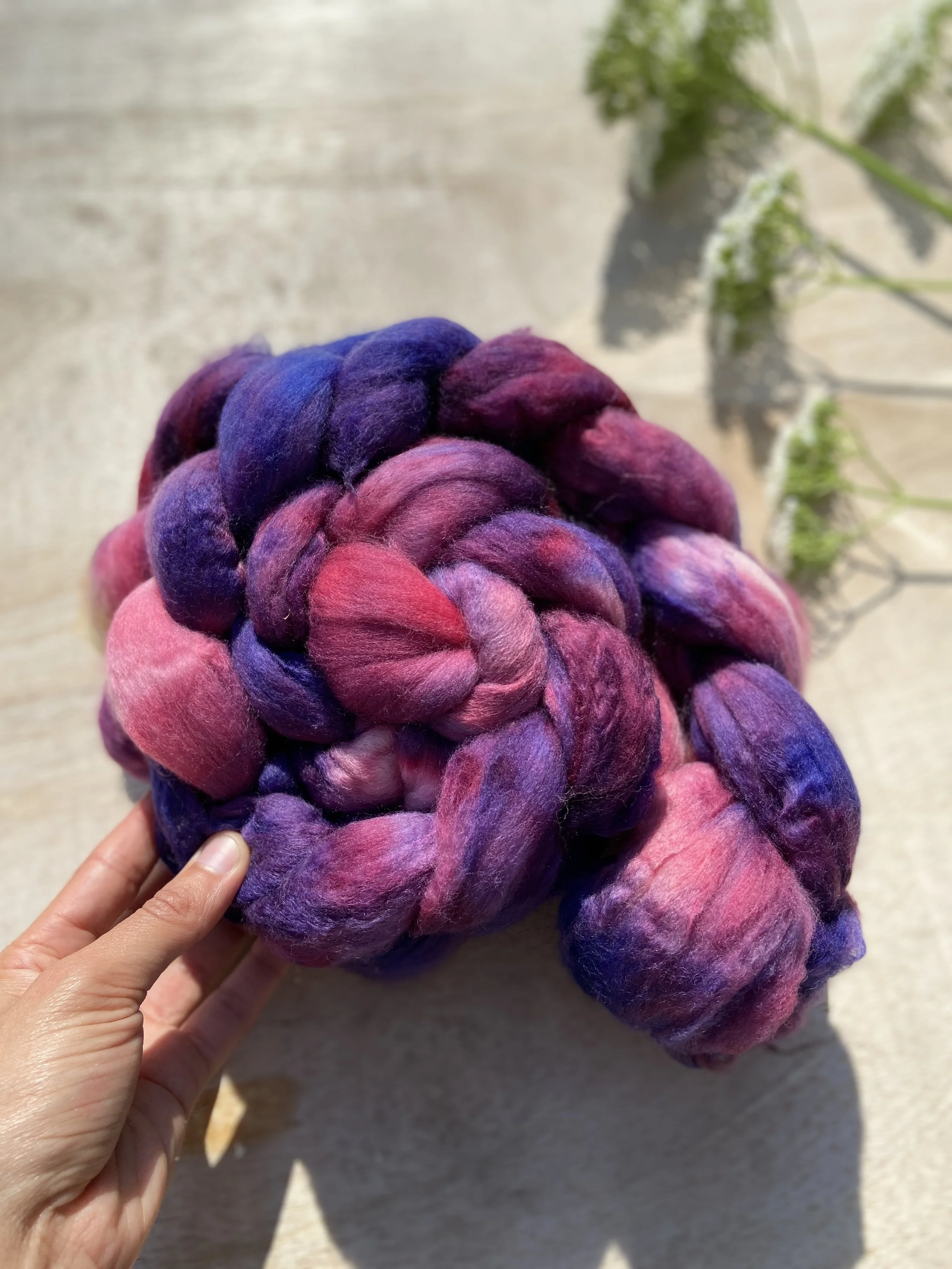An open Love letter to natural fibers and color
I am unashamedly in love with wool, I think its the most wonderful fiber on earth. I love to wear it, I love to spin it, I love to feel it in my hands, I love sheep and how renewable their fiber is.
Wool is Plastic free, insulating, cooling, elastic and sustainable.
most of the fibers I use in my work are wool, and all are natural fibers.
Have you ever been asked, what’s your favorite color? I struggle with an answer to this one. I live in color, I love color with my whole heart. I am deeply moved and inspired by the colors surrounding me in the natural world and by the feelings they evoke.
How do you tell someone that you love the way the ocean is in a perpetual hug with itself, and you love the cream color of a cresting wave. How do you put into words the electric blue and purple right before a thunderstorm, clashing with the orange of a sunset? How do you say, you like the yellow grey of the sky on a day that is threatening rain just because your lover once pointed it out in the morning as the sun rose over the trees?
I suppose you say just that, but be prepared to get some blank looks.
I tend to think that my hand knit wardrobe and my dye style is neutral, but after setting up at the art fair (my very first one) a few weeks ago and taking a look at my display, I noticed that my space was bursting at the seams with color. Even my instagram grid, some people have a very curated page with a common color theme, and then there’s mine, a rainbow.
There are however a few color schemes that I always seem to gravitate towards. Namely, Orange and purple, pink and orange, chartreuse and burgundy, now that I am reading that back, admittedly similar. I also like earth tones, colors deep and rich.
That being said, I am deeply impressed by dyers who can dye neons and pastels and do it consistently. That dye style has proven difficult for me and I greatly admire those types of colors when I see them done well by other dyers.
Monochromatic color is also very appealing to me, I notice that when I plan my outfits or my fiber blends, they are mostly monochrome with an occasional pop of a complimentary color. Indicative of my style, classic with little surprises and stunning details.
What can I say, if my colors and textures don’t match, nothing seems right in the world.
The fibers:
I hand dye all my colors, sometimes leaving them in a braid of fiber that was a planned colorway. What I really love is to blend them on the drum carder! It feels like coaxing the color out of the fiber and letting it really shine in community with its peers.
Local Merino Wool-
Every year I buy a couple fleeces from a farm in Michigan. The woman who runs the farm has a small flock of Merino sheep. I skirt the fleeces at home and send them to the local fiber mill where they do the cleaning and card the fiber into roving.
I then dye the roving and add it to my fiber blends.
I make it a tradition
to process by hand one fleece every year, so I never forget how to work this wool entirely by hand.
Local BFL locks-
These are sourced from Wisconsin farms, I buy them directly from the fiber mill and I process them by hand at home, dyeing and sometimes carding them, but I really love the look of the curly lock. Don’t you?
Local Alpaca-
Someone from instagram reached out to me and graciously offered to send me the alpaca fiber from their farm in Iowa, they sent a gorgeous natural gradient of colors in white, cream, brown, and black, I have dyed some of the white fiber. I especially enjoyed creating a special yarn that was self striping of all of the natural colors.
Organic Polwarth wool-
The Organic Polwarth is a combed top preparation, what one would most likely see on the commercial market. A domestic blend of organic polwarth wool, it is grown and milled in the US and I buy it from a distributor so I can keep up with the demand of my product, and have available a luxury fiber. Usually this is what my planned color ways are dyed on because that is what most available and accessible to spinners.
I buy these in 30lb bumps at a time. My plan is to switch my base next time and get some BFL wool, and some Ramboulliet wool. What are your favorite breeds that you would like to see soon?
Something you’ve never seen before:
When I first started blending batts I was sent some sample fiber.
The sample fiber included some Angelina and firestar in a few different colors. This was really fun, but I later discovered that these were micro plastics and moving forward I wanted my work to be entirely comprised of natural fibers.
Here are some of the alternatives that I have found and experimented with.
Mulberry Silk-
Luxiourious beyond belief mulberry silk is very soft and fine, a natural fiber alternative solution to the shiny effect of firestar and angelina (microplastics). Mulberry silk adds depth and elevates my blends, and I love using it in universe or space themed color blends.
Mulberry silk noil-
Silk noil is a by product of the silk making industry. I buy the raw noil and then dye the colors, I then blend them on my drum carder. Silk noil is very soft, fine and textured, it makes a really great tweed or art yarn.
Sari Silk-
Sari Silk is a by product of the sari making industry in india. little threads of silk are collected and combed into roving. I hand paint these fibers onto the drum carder.
Wool Neps-
By far I get the most questions about this one. Wool neps are a by product of the commercial wool industry in making combed top. They are little felted balls of wool. I love using them for a little added texture and depth of color. I think neps make a great addition to an art yarn, and i love adding them into my ocean themed batts. or anything with stars.
Bamboo-
Bamboo is a plant fiber, it shines like silk but is vegan, I use a lot of wool so none of my blends are specifically vegan but this fiber does happen to be. I am not sure if I am going to continue purchasing this fiber and I am running out soon! so, let me know, do you want it to stay? or are we better off without it?
Applying Color
There are so many methods of dyeing and y'all know I love to experiment. I’ve tried snow and ice dyeing, botanical dyeing, dyeing with koolaid, food scraps, not to mention all of the different techniques of applying the dye.
I love learning about color placement, color theory, being surprised by a dye pot, and getting exactly what I was going for.
I’m not especially methodical when it comes to dyeing, and I mostly go by sight, I see a color and try to dissect it, a little red here, a little orange, a pinch of green and some grey but mostly yellow. Which is why all of my color ways are completely one of a kind and not able to be reproduced by anyone, I can however get pretty dang close to a color if you want to commission something.
Botanical dyes-
All of the botanical dyes I have been using so far have been hand grown and or harvested by me in my dye garden, or wild harvested on the unneeded ho chunk land that I have access to.
I follow spirit when harvesting, never harvest the first plant I see, ask permission from the land, give an offering of heart song, and steward the plants in the areas where I am harvesting.
I did just recently buy a retiring dyers stash of powdered botanical dyes, so we shall see how that all goes!
Acid dyes-
I use Greener shades Dye, which is a non-hazardous, non-chrome, low impact, heavy metal- free acid dye, the color is fixed to the fiber with citric acid (the same stuff on sour patch kids)
All of my fibers are sustainable, Natural fibers, I don’t use any micro plastics.
I want to do my wool work as close to the land as possible and I partner with as many local farms as I can, I am constantly looking for local folks who align with my values to buy fleeces from.
All of the wool that I use is ALWAYS mulesing free, from animals who graze in pasture.
Thank you so much for your continued support, being a black queer fiber artist living rurally is a nuanced experience. On one hand, I wouldn’t want to be doing anything other than connecting with the land and leaning more and more into my passion. On the other, it is a bit strange being the only person who looks like anywhere near me engaging in this very niche art form.
